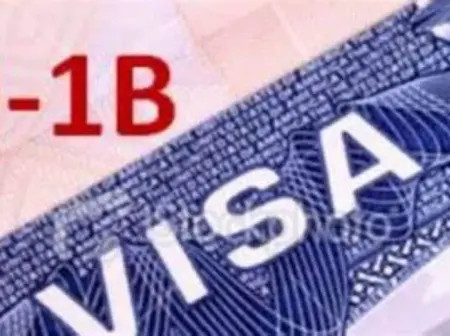In a move signaling heightened scrutiny of U.S. immigration and labor policies, a new H-1B visa reform bill introduced in Congress seeks to overhaul key aspects of America’s skilled worker visa program. Senator Jim Banks has unveiled The American Tech Workforce Act. It is a legislative proposal aimed at reducing dependence on foreign labor and tightening control over employment-based immigration pathways.
The bill, if passed, would eliminate the current H-1B lottery system and replace it with a market-based model. It would award visas to the highest bidder among eligible employers. In addition, the legislation seeks to raise the minimum salary for H-1B workers from $60,000 to $150,000. This is a move designed to prioritize the hiring of U.S. workers by making it more expensive for companies to employ foreign talent.
Perhaps most controversially, the bill also calls for the elimination of the Optional Practical Training (OPT) program. This program currently allows international students on F-1 visas to work in the U.S. for up to three years after graduation, particularly in STEM fields.
The bill reflects growing bipartisan pressure in Washington to clamp down on what lawmakers and labor advocates perceive as abuse of the H-1B visa system. Critics argue that the program has been used by tech companies and outsourcing firms to import cheaper labor. This displaces qualified American workers and depresses wages in the tech sector.
“American tech jobs should go to American workers,” Senator Banks said in a statement. “Our immigration policies should not reward companies that game the system or offshore labor while American STEM graduates struggle to find employment.”
The proposal arrives amid increasing calls to prioritize domestic labor and limit long-term pathways to citizenship through employment visas. Many foreign graduates use these pathways as a stepping stone to permanent residency via employer sponsorship.
H-1B Lottery Elimination: The current random lottery system would be scrapped in favor of a competitive bidding process. Visas would be granted to employers offering the highest salaries. This is intended to prevent fraud and ensure that visas go to the most valuable and high-skilled roles.
Minimum Salary Increase: The wage threshold for H-1B workers would jump from $60,000—set in 1998—to $150,000. This reflects inflation and aligns with the average tech industry salaries. This change aims to reduce the cost advantage of hiring foreign workers over U.S. citizens.
OPT Program Termination: The bill seeks to dismantle the OPT program entirely. It argues that the program serves as a loophole that allows companies to sidestep labor protections. Companies could bring in foreign graduates at lower wages without going through H-1B processes.
The proposal has already sparked concern across the tech industry, higher education institutions, and immigration advocates. Many argue that these reforms could have a chilling effect on innovation and the ability of U.S. companies to recruit global talent.
Tech giants and startups alike rely heavily on the H-1B program to fill roles in software engineering, AI, data science, and cybersecurity. These are areas where the domestic talent pipeline is often insufficient. Universities fear that ending OPT would deter international students from enrolling in U.S. graduate programs, further impacting research and development.
The bill’s introduction sets the stage for a heated debate in Congress. This is particularly true as immigration and job protection become central themes in the 2026 election cycle. While it’s unclear whether the bill will pass in its current form, it highlights a broader shift in U.S. immigration policy — one that places greater emphasis on economic nationalism and reduced dependence on foreign labor.
As H-1B visa reform moves to the forefront of political discourse, employers, international students, and skilled foreign workers alike are bracing for potential changes. These changes could redefine the landscape of employment-based immigration in the United States.

Leave a Reply